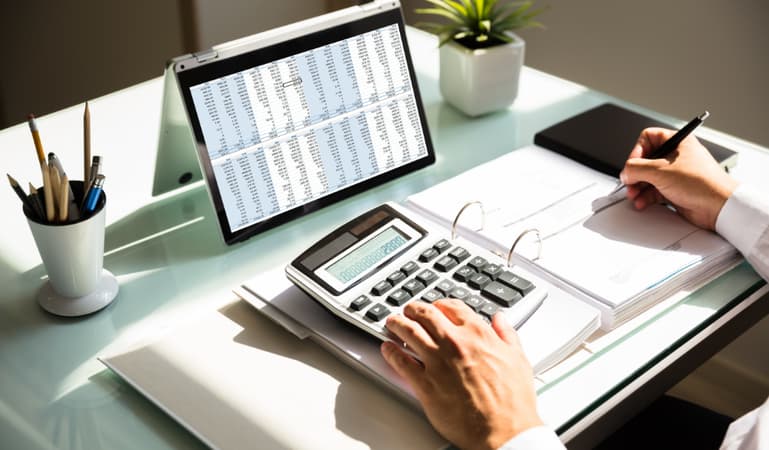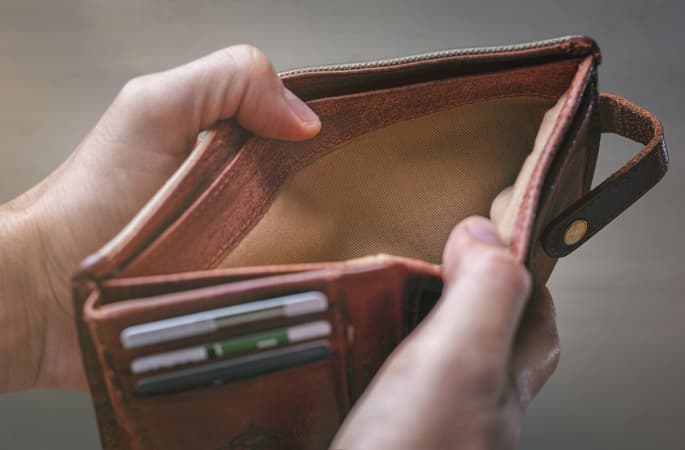Jump to a section
Sales invoices are an important part of the sales process. They document sales transactions and provide a record of what was sold, when it was sold, and how much money was exchanged. In this guide, we will discuss what sales invoices are and how to create them. We will also cover some best practices for issuing sales invoices. Let's get started!
What is a sales invoice?
A sales invoice is a document that is used to record sales transactions. It includes information such as the date of the sale, the products or services sold, and the total amount due.
How does a sales invoice work?
In most cases, sales invoices are generated by the seller and sent to the buyer after a sale. However, buyers may request a sales invoice in advance in order to confirm the details of their purchase. Either way, sales invoices play an important role in documenting and tracking sales transactions.
Why are sales invoices important?
- Documentation: Sales invoices document sales transactions between the buyer and the seller. For the buyer, it provides a record of what was purchased and when. For the seller, it provides a record of what was sold and how much money was exchanged.
- Tax purposes: They provide an accurate record of your income and expenses, which is important for tax purposes. They can also be used as proof of revenue for HMRC audits.
- Bookkeeping: They can be tracked by your accountant or bookkeeper as accounts receivable. This helps stay on top of expected revenue and track overdue payments.
- Inventory management: Invoices can help get an accurate picture of what inventory items are selling and which ones are not. This information can guide reordering or discontinuing certain products.
- Legal protections: In the event of a dispute, sales invoices can be used as evidence to support the claim that goods or services were sold and payment was made.
- Business strategy: By tracking data from the invoices, you can determine customer preferences, pricing strategies, and purchase frequency.
What should a sales invoice include?

At a minimum, a sales invoice should include the following information:
- Contact information: Include your business name and contact information, like your website, email address, and phone number.
- Date: The date of the sale.
- Customer information: The name and address of the customer.
- Invoice number: Helps to track invoices.
- Item description: A clear and concise description of the goods or services ordered.
- Quantity: The number of items sold.
- United price: The price per item.
- Payment terms: the conditions under which the buyer will make payment, such as how long they have to pay.
- Discounts offered: Any discounts applied to the goods or services.
- Postage: Shipping costs, if applicable.
- Tax rates: The relevant tax rate.
- Total amount due: The total amount, including all charges.
Types of sales invoices
There are four primary types of sales invoices that most transactions will fall within.
Standard invoice
A standard invoice is used in most cases, and covers all of the basic information. This includes the date of the sale, the name and address of the customer, a description of the goods or services sold, the sales price, and the name and contact information for the business.
Standard invoices can cover service sales invoices and product sales invoices. Service sales invoices document the sale of services, such as repairs or consulting work. Product sales invoices document the sale of physical goods.
Standard invoices typically document a one-time transaction and are presented upon completion of the sale.
Proforma invoice
A proforma invoice is a sales invoice that is issued before the goods or services are provided. Proforma invoices are typically used to confirm an order or to request payment in advance. Proforma invoices should include all of the same information as a standard sales invoice, as well as the expected date of delivery or performance.
Recurring invoice
A recurring invoice is a sales invoice that is issued on a regular basis, such as monthly or quarterly. Recurring invoices can be used to bill customers for services that are provided on a regular basis, such as landscaping or a subscription service. Recurring invoices should include all of the same information as a standard sales invoice, as well as the frequency of billing.
Commercial invoice
A commercial invoice is a sales invoice that is used for international shipments of goods. Commercial invoices must include certain information, such as the buyer and seller information, a description of the goods being shipped, and the value of the goods, to help the shipment get through customs. Commercial invoices are used by customs officials to determine whether duties and taxes should be levied on imported goods.
How to create a sales invoice
Sales invoices can be created using accounting software, such as QuickBooks or FreshBooks. They can also be created using spreadsheet or PDF software, such as Microsoft Excel or Adobe Acrobat.
If you are using accounting software to create sales invoices, you will likely have the option to include your business logo and branding, which you can also add manually to your self-created spreadsheet or PDF. You will also be able to choose from a variety of sales invoice templates. Remember to save it and print the invoice for your records.
Useful tips for creating sales invoices
Rebecca Alford has over 15 years of experience and is Capital on Tap’s Finance Director. Some of her top tips when it comes to sales invoices are:
“Understanding the nuances of sales invoices can make a big difference to your business's financial health. A particularly important part is invoice terms. Clear and specific payment terms not only ensure timely payments but also mitigate disputes. By setting concise due dates and outlining penalties for late payments, you can streamline cash flow and reduce admin.
Another critical aspect is invoice numbering. By implementing a structured numbering system, organising financial records becomes much easier and facilitates quick retrieval during audits or financial reviews. I would particularly recommend sequential numbering as it enhances accountability and minimises errors in tracking sales transactions over time.
My top recommendation is integrating invoicing with accounting software like QuickBooks or Xero as they can automate invoice generation and payment tracking. This automation not only saves time but also provides real-time insights into your receivables.”
Here are some other best practices when it comes to creating a sales invoice:
- Be clear and concise: The information included should be brief and easy to understand.
- Check grammar and spelling: Proofread your sales invoice before sending it.
- Stay organised: Keep a copy of the invoice and make sure it’s filed correctly for bookkeeping.
- Be prompt: Invoices should be sent as soon as the sales transaction is complete.
What to do if you don't receive payment after sending an invoice
If you have followed the tips above and have not received payment, there are a few things you can do.
- Contact the customer: If you have not received payment, reach out to the customer directly and ask when they plan to make payment.
- Send a reminder: If you still haven’t received payment after contacting them, send a reminder. This can be done via email or post.
- Take legal action: If you have not received payment after taking the above steps, you may need to take legal action. This is a last resort and should only be done if all other attempts to receive payment have failed.
The bottom line
Though many business owners consider sales invoices as a boring but necessary part of their administrative responsibilities, without them, you wouldn’t get paid – which should make it one of the best parts of running your business!
Frequently asked questions
What's the difference between a sales invoice and a sales receipt?
The main difference between a sales invoice and a sales receipt is that the sales invoice is administered to document the transaction and request payment, whereas the sales receipt is issued upon receipt of payment.
What’s the difference between a sales invoice and a purchase order?
Purchase orders are created and sent by buyers to the seller to officially request goods or services and track the delivery and payment process. Sales invoices, on the other hand, are created by the seller and sent to the buyer once the service has been completed or the good has been obtained by the customer.
How do I raise a sales invoice?
Raising a sales invoice involves gathering necessary information, choosing a template, entering details like invoice number, date, customer information, item descriptions, quantities, unit prices, and taxes. Include payment terms, add your contact information, review for accuracy, and then send it to the customer.
What is the difference between a purchase invoice and a sales invoice?
A purchase invoice is issued by a seller to a buyer to document a sale and helps the buyer track their purchases. A sales invoice is issued by a seller to request payment for goods or services provided and helps the seller track their revenue.
How often should I raise sales invoices?
For one-time sales, raise an invoice immediately after the sale. For ongoing services, raise invoices regularly, such as monthly or at the end of project milestones.
What should I do if a customer disputes an invoice?
If a customer disputes an invoice, review it for errors, communicate with the customer to understand their concerns, provide supporting documentation, resolve the issue by negotiating a solution, and follow up to ensure customer satisfaction.











